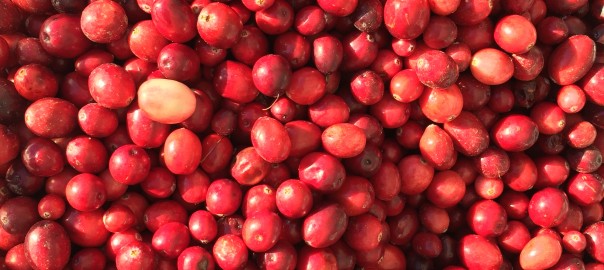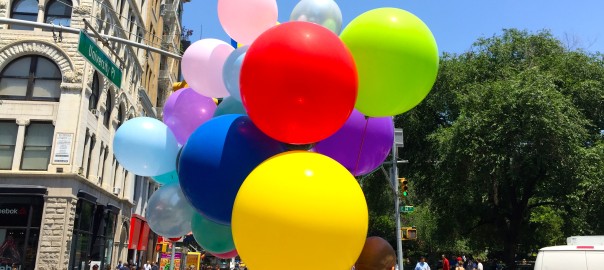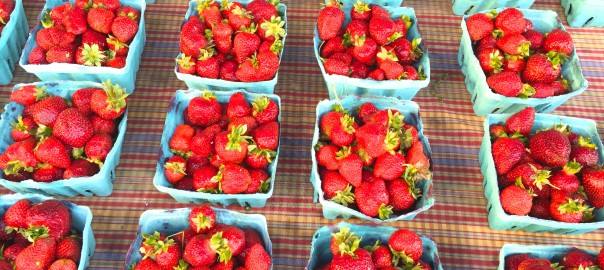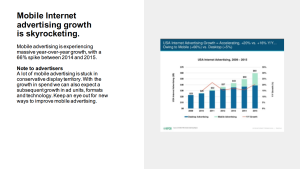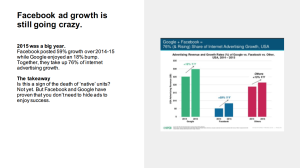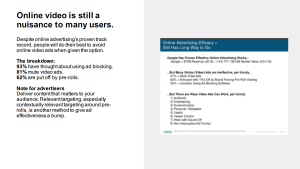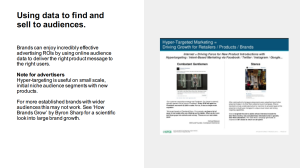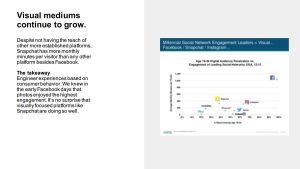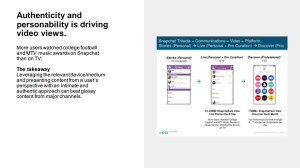DO MEDIA BRANDS EVEN MATTER ANYMORE?
Columbia Journalism Review asks the question at the heart of advertising: In a world where information is coming at you from all sides, does it matter who says what and where? According to study by CJR and the George T. Delacorte Center for Magazine Journalism, yes it does matter:
“Readers are less likely to trust a longform story that appears to have run on BuzzFeed than the same article on The New Yorker’s website.”
While CJR is focused on journalism, the implications are clear for contextual advertising as well: it matters where information is coming from. While it’s true that some study members did not notice the media brand—a growing phenomenon captured by the Reuter’s 2016 Digital News Report—those that did notice tended to be older and better read. That is, a better match for the core hardcover book buying audience.
#media #brands
LINKEDIN OPENS TO PROGRAMMATIC EXCHANGES
LinkedIn announced that it is opening its advertising to open exchanges to deliver increased banner impressions on the network. This is good news for anyone wanting to target the LinkedIn audience with a business or self-improvement book, especially those who do not have the budgets to take advantage of LinkedIn’s sponsored content opportunities.
#linkedin #business #programmatic
SNAPCHAT DROPS AD MINIMUMS
The minimum buy for a Snapchat campaign is reportedly dropping from $750,000 to $100,000. Book advertisers are likely to be waiting for another round or two before buying ads through the platform’s API. That said, there are co-branded Snapchat opportunities with such partners as People magazine that are workable for bigger book-size budgets. Contact your Verso account executive to learn more.
#snapchat #social
THE LIMITS OF ALGORITHMS
Facebook announces a new service that curates local events as selected by a team of people, not algorithms. This is good news for Facebook users (and other humans), but less good news for local media players such as Time Out:
“The product is launching in 10 U.S. cities: Boston, Chicago, Dallas, Houston, Los Angeles, Miami, New York, San Francisco, Seattle and Washington, D.C. The curated program appears to take on local publishers such as Time Out New York and the Village Voice as well as mobile apps like Eventbrite, Like a Local, Scout and Field Trip.”
#facebook #local #human
FOOD PORN MOVES TO SNAPCHAT
AdWeek reports that many of the most popular foodie brands on Instagram are moving to Snapchat.
“‘As Instagram has really slowed down the last four months or so, you can just see what’s happened on that platform and it’s obviously changing a lot,’ said Andrew Steinthal, co-founder of The Infatuation, a restaurant review site that’s heavily leaned on Instagram to build a following since launching in 2009.
‘Our entire audience is on Snapchat now—it’s the most reactive social network that we have. You can just see the impact on Snapchat and feel it right away right now. People are so deep into Snapchat and reacting to it.'”
While Snapchat requires more hands-on engagement from brands, it’s precisely that hands-on quality that makes it an effective platform.
#food #snapchat #instagram
FOX NEWS DELIVERS FACEBOOK ENGAGEMENT
For years, the highly engaged Fox News audience has made the site one of our best performers with digital ads. Readers on the site are hungry not only for news and information you’d expect, but also for high quality commercial fiction, especially thrillers. While Fox News is not the biggest media property, this engagement is translating to superlative response from the brand’s audience on Facebook:
“Fox News had nearly 120 million likes, shares and comments on its page in the first six months of the year, well ahead of digital natives including No. 2 NowThis (80 million interactions) and The Huffington Post (61 million). Mark Zuckerberg himself recently cited Fox News in defending Facebook against charges that it’s politically liberal, saying Fox ‘drives more interactions on its Facebook page than any other news outlet in the world. It’s not even close.’”
As the digital landscape evolves, Fox News continues to draw a passionate, curious audience that loves books. Click here to read the Digiday article.
#foxnews #targeting #facebook
HOLD THE VIDEO
Columbia Journalism Review reports that social media’s influence on news consumption is growing. While there are more and more social conversations around news topics, the fact that the conversations are taking place on social networks means that Facebook and Twitter are becoming more dominant as brands for news and traditional brands such as The New York Times and The Guardian are beginning to lose some of their traction with readers. One surprising bit of information from the study was the continuing importance of text to news consumers despite the rise of video:
“Platforms and publishers alike have been pouring money into video sharing, such as Facebook Live. One Facebook executive even predicted last week that in the next five years video will replace the written word. But the report suggests that many news consumers are resistant to watching video because it is faster to read an article, and because of the ads that often precede videos.”
http://www.cjr.org/analysis/reuters_report.php
#social #video
Photo (c) Martha Otis

